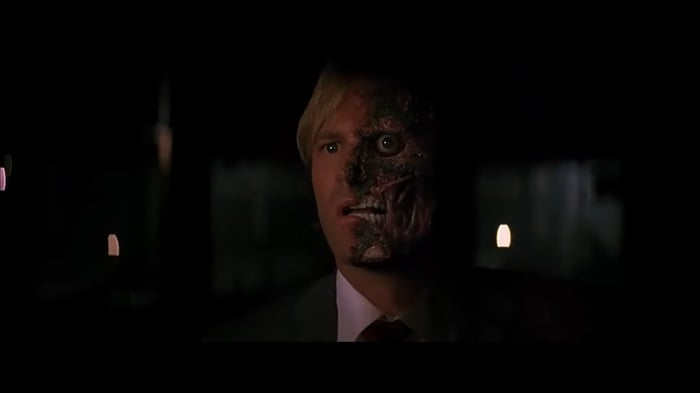The Dark Knight, directed by Christopher Nolan and released in 2008, is the second instalment in his Batman trilogy and is widely regarded as one of the greatest superhero films ever made. The movie's ending is set against the backdrop of a Gotham City in chaos, terrorized by the Joker (Heath Ledger), Batman's arch-nemesis. The Joker has unleashed chaos by creating a moral dilemma that pits the citizens of Gotham against each other. He has also taken two ferries hostage, each with a detonator for the other's explosive, forcing them to make a life-or-death decision.
The Final Confrontation
The climax of The Dark Knight centers around the final confrontation between Batman (Bruce Wayne) and the Joker. Batman is driven to capture the Joker, who has unleashed mayhem and is threatening to reveal the true identity of Gotham's White Knight, District Attorney Harvey Dent.
This showdown takes place in a construction site, a place symbolizing the under-construction nature of Gotham's justice system and the city itself. The Joker's chaos has pushed Batman to his limits, and it's a battle of wits and morality. The Joker wants Batman to break his moral code and kill him, challenging Batman's principles and showing that anyone can be pushed to their darkest side.
The Ferries
The moral dilemma on the two ferries, one filled with ordinary citizens and the other with criminals, serves as a microcosm of the chaos the Joker has unleashed on Gotham. The passengers are given the choice to detonate the other ferry to save themselves. The tension in these scenes is palpable as the characters grapple with their morality and make their decisions.
This subplot emphasizes the film's themes of chaos and morality, showing that even ordinary people can be pushed to extremes when faced with a life-and-death situation. It's a powerful exploration of the human condition and the fine line between good and evil.
Harvey Dent's Transformation

Throughout the movie, Harvey Dent (Aaron Eckhart) is depicted as Gotham's White Knight, a symbol of hope and justice. However, the Joker's manipulation pushes him to his breaking point. In the climax, Dent is confronted by Batman and Commissioner Gordon (Gary Oldman) in an attempt to save Commissioner's son, who is being held hostage by the Joker. In the ensuing struggle, Dent is left severely scarred and emotionally shattered. This marks his transformation into Two-Face, a tragic villain who seeks revenge.
The Truth About Harvey Dent
As the The Dark Knight hurtles toward its ending, Batman, Commissioner Gordon, and newly appointed District Attorney Harvey Dent conspire to hide the truth about Dent's transformation into Two-Face and his killing spree. They believe that revealing Dent's crimes would undo the progress they've made in cleaning up Gotham's streets and bring despair to the city.
This decision is a moral compromise, and it weighs heavily on the shoulders of Batman, Gordon, and their allies. It illustrates the complex, morally gray world in which they operate and the sacrifices they are willing to make for the greater good.
The Confrontation with Two-Face
The The Dark Knight 's climax reaches its peak when Batman confronts Two-Face in an abandoned building. Two-Face is seeking vengeance against those he blames for his transformation, including Gordon's family. This final confrontation highlights the personal stakes involved, as Batman fights to protect the innocent and bring justice to Gotham.
The Final Moral Test
Batman faces a moral test when he confronts Two-Face. He is forced to grapple with the consequences of his actions and the need to bring Two-Face to justice while also protecting Dent's image as Gotham's White Knight. This moment encapsulates the film's central theme of moral ambiguity and the choices individuals make in the face of chaos.
The Truth Emerges
The Dark Knight’s ending takes a somber turn as the truth about Harvey Dent's transformation and crimes is revealed. Commissioner Gordon delivers a powerful speech, explaining that Dent was not a hero but a fallen symbol of hope. This revelation shatters the public's perception of Dent and threatens to undo all the good he had done for Gotham.
The Dark Knight's Sacrifice
In the ending moments of The Dark Knight, Batman takes the fall for Dent's crimes, allowing himself to be pursued as the murderer to preserve Dent's image as a symbol of hope. He goes into hiding, leaving Gotham in search of a new hero. This act of self-sacrifice reinforces the theme of moral sacrifice for the greater good, as Batman becomes a fugitive to protect Dent's legacy and ensure the city's future.
The Joker's Victory
The film ends with the Joker achieving a kind of victory. Although he is captured and imprisoned, he has succeeded in corrupting Harvey Dent and tarnishing the city's White Knight. The Joker's laugh is heard as he is taken into custody, signaling that his chaos endures, even if he is incarcerated.
The Dark Knight concludes on a note of ambiguity and moral complexity. It challenges traditional superhero narratives by delving into the darker aspects of human nature and morality.






